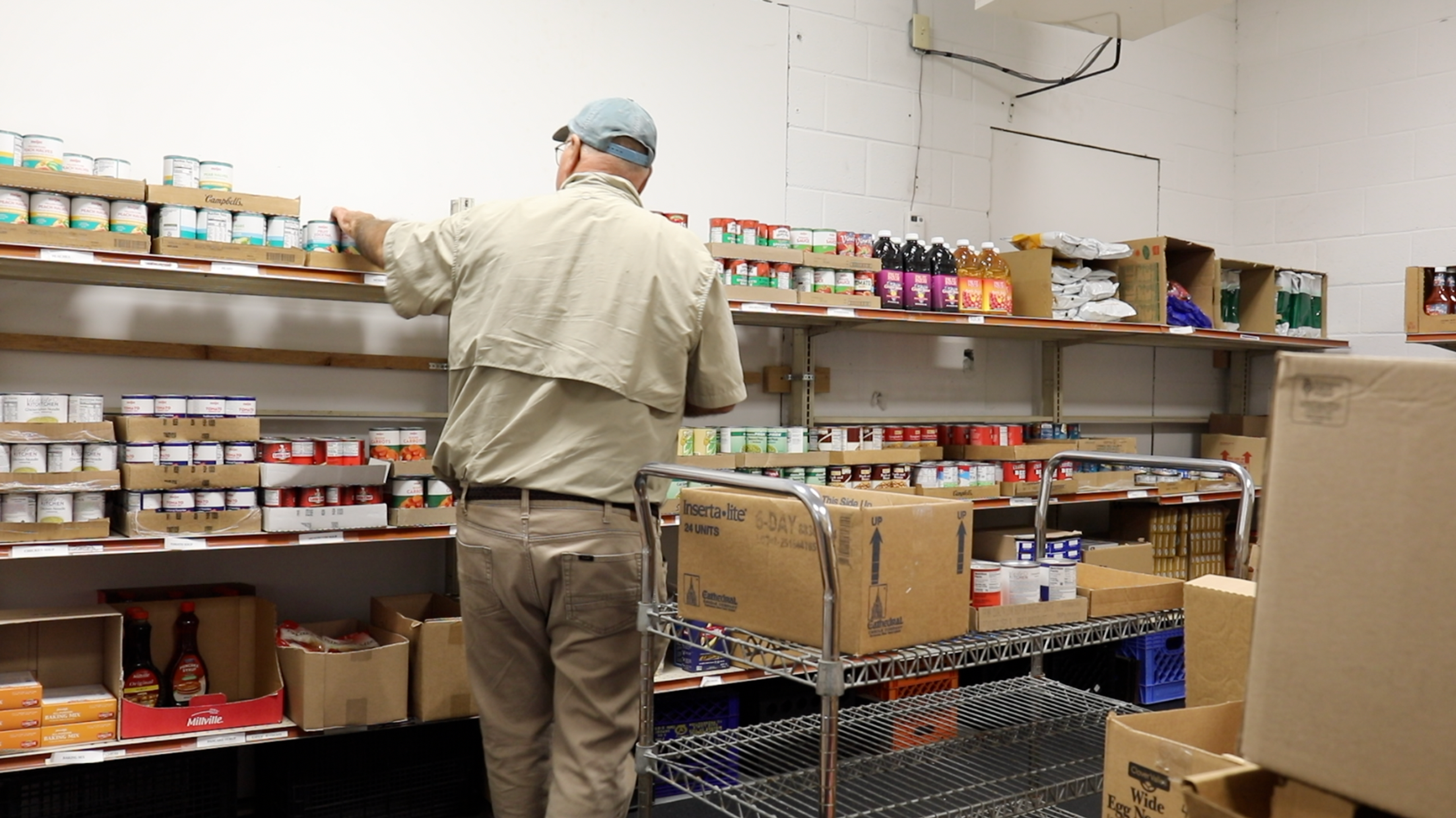Bold Strategies, Resources Bring Fresh Solutions to Opioid Epidemic
Maiya Hayes
| 7 min read

“My partner lost his son in February to an overdose of heroin and fentanyl — two and a half weeks after he was bailed out of jail. … We’re losing our children, we’re losing our brothers, our sisters, our cousins, our colleagues, our family members and our friends. We have to do something about this.” — Linda Vail, health officer for the Ingham County Health Department
More than 1,900 people died in Michigan from opioid overdoses in 2017, according to preliminary data released by the Michigan Department of Health and Human Services earlier this month. The 1,941 opioid-related deaths are a nine percent increase from the state’s overdose deaths in 2016. The health care community is working tirelessly to combat this devastating and complicated epidemic. Many resources, partnerships and strategies involved in this fight were highlighted during a recent panel discussion titled “Diversified approaches to address the opioid epidemic.” The panel discussion was part of Blue Cross Blue Shield of Michigan’s eighth annual Healthy Safety Net Symposium, which was held Sept. 26 in East Lansing. The symposium drew more than 250 leaders of Michigan’s safety net health organizations. Key allies in the state’s battle against opioid addiction and overdoses were on hand to discuss the strategies they’re using to prevent deaths and increase access to treatment.
Attacking prescription drug abuse
The abuse of prescription opioids is rampant in the U.S.:
- In 2016, more than 40 percent of all opioid overdose deaths in the U.S. involved a prescription opioid, according to the Centers for Disease Control and Prevention.
- The National Safety Council reports that 70 percent of people who have abused prescription painkillers reported getting them from friends or relatives.
- Knowing the prominent role that prescription drug abuse is playing in the opioid epidemic, Blue Cross established a pharmacy program to target this issue.
The Blue Cross pharmacy program has four components: 1. Prevention: • Using prior authorizations, refill restrictions and quantity limits to help prevent stockpiling and excessive quantities of pain pills • Encouraging doctors to increase electronic prescribing of controlled substances to protect against fraud and abuse 2. Fraud detection and abuse intervention: • Monitoring claims to identify members receiving a dangerous and highly addictive drug combination commonly referred to as the “Triple Threat” • Identifying members who obtain opioid prescriptions from multiple prescribers and pharmacies • Applying algorithms to integrated pharmacy and medical claims data to identify prescribers, pharmacies and members with above average opioid prescriptions or use 3. Treatment: Earlier this year, Blue Cross established a pilot program for Blue Care Network and BCN AdvantageSM members in which opioid use disorder is treated as a chronic illness. 4. Advocacy and awareness: Blue Cross and the Blue Cross Blue Shield of Michigan Foundation joined the Michigan Health Endowment Fund, the Community Foundation for Southeast Michigan and the Superior Health Foundation to provide more than $500,000 to community organizations that are trying to help those suffering from addiction. “We want to help members get the care they need to deal with their pain. At the same time, we want to make sure we’re not enabling the crisis,” said Todd Anderson, director of Public Policy and Regulatory Affairs for Blue Cross.
Creating sobriety services for ex-prisoners
Helping people stay sober after they’re released from Michigan’s correctional facilities may play a pivotal role in reducing opioid overdose deaths in our state. “If we aren’t in the criminal justice system addressing this problem, we are not going to get ahead of the curve,” said Linda Vail, health officer for Ingham County Health Department. At the Healthy Safety Net Symposium, Vail said that her organization is using a social mission grant it received from Blue Cross to promote long-term sobriety among individuals released from Ingham County Jail. Providing immediate support after their incarceration ends is crucial, because former prisoners have an extremely elevated risk of dying from an opioid overdose within the first two weeks of their release. Vail said that on average, prisoners are incarcerated in Ingham County Jail for 30 days, which means they’re sober for 30 days. Ingham County Health Department wants to help prisoners stay sober once they’re released from jail by providing them with education, medication-assisted treatment and peer recovery coaches. It’s similar to re-entry services established by the state of Rhode Island in 2016. “We need to be with people as they are released,” Vail said. “We need to connect them to resources. We need to be part of transferring them back into our communities in ways that keep them healthy. And so that’s what we’re working on.”
Peer recovery coaches rising to prominence
Pat Stropes dealt with substance use disorder for 30 years before beginning his sobriety on Jan. 18, 2014. Because he’s grateful to the peer recovery coach who helped him get sober, Stropes is now supporting other people with substance use disorder who want to take control of their lives. “I live by this: I am an addict, and I am an alcoholic in recovery,” said Stropes at the Blue Cross symposium. “By our silence, we allow others to define us, so I’m out here screaming that this is what I am. And I strive every day to knock down those walls of stigma, because I’m tired of people dying.” Stropes and other peer recovery coaches have received services or support for a substance use condition. They’re certified by the MDHHS, which requires coaches to be in recovery for at least two years and apply for training and certification. “We know what it’s like to detox. We know what’s it’s like to live it,” said Stropes about peer recovery coaches. “We know how the guilt and shame destroy us, and we know how it takes us right back to active addiction.” Stropes serves as a supervisor for Peer Recovery Support Services. His group is a liaison for Growth Works, a non-profit organization that provides addiction counseling and treatment resources in Wayne County. Stropes also helped develop Growth Works’ new Rescue Recovery pilot program that was unveiled in September. The program works with St. Mary Mercy Livonia hospital to help patients who are admitted for opioid overdoses. “If a patient is in there from an overdose of opiates and they want to see a coach, they sign a release saying ‘Yes, I want to see a coach,’ ” Stropes said. “The social worker, nurse or doctor calls the answering service, and we’re there … within 32 minutes.” The Rescue Recovery program, which aims to improve treatment for opioid addiction and reduce overdose deaths, offers 24/7 assistance to St. Mary Mercy Livonia. Stropes said the program is also establishing a partnership with local police departments in western Wayne County to help people struggling with opioid addiction. “We’ve got to do what we can do — every one of us — to try to help another family member go home to their family and live a healthy, happy life,” Stropes said, “And that’s what I breathe, and I eat, and I taste every single day.”
Federal funding supports state’s key initiatives
The Michigan Department of Health and Human Services understands that the opioid epidemic is a complicated issue with far-reaching impacts. As a result, the department has launched a massive effort to prevent opioid-related deaths and provide addiction treatment to those in need. Debra Pinals, medical director for the Behavioral Health and Forensic Programs at MDHHS, discussed her organization’s strategy during her presentation at the Healthy Safety Net Symposium. She said that MDHHS has used the Opioid State Targeted Response grant it received in July 2017 — $32-plus million over two years — to: • Enhance its website to help Michiganders find treatment centers in every county. • Develop a naloxone standing order to make the life-saving medication available to Michigan residents without a prescription. Currently, 60 percent of the state’s pharmacies have signed on to distribute naloxone without a prescription. • Provide peer recovery support and medication-assisted treatment, or MAT, for recovering addicts who are being released from certain prisons. • Establish the Michigan Opioid Collaborative, which helps increase access to MAT, a combination of medication and behavioral therapies that treat substance use disorders. Recently, it was announced that MDHHS will receive nearly $56 million in federal funds to continue combating opioid abuse and use. Pinals said her organization will use those funds to continue supporting its current initiatives. And she encourages everyone involved in this battle to have a patient and persistent attitude. “We know what whatever interventions we’re putting into place now, they won’t have an immediate effect on the numbers,” she said. “I think people wanted to see an immediate solution. But the problems are so complex that it’s going to take time for the interventions to yield the impact that we want to see across the country.” Photo credit: Mitchell Wessels





